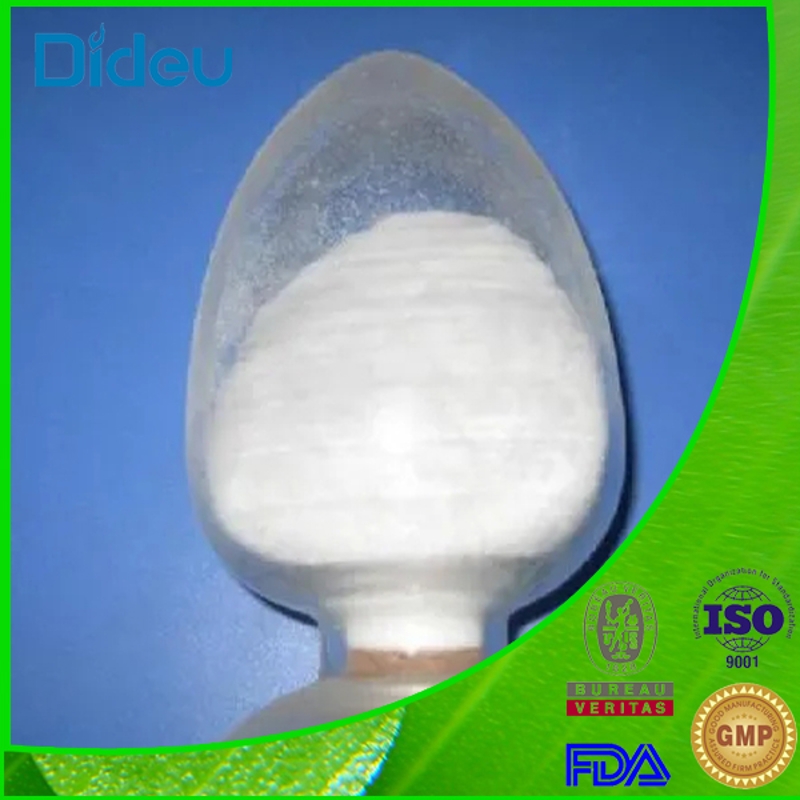-
Categories
-
Pharmaceutical Intermediates
-
Active Pharmaceutical Ingredients
-
Food Additives
- Industrial Coatings
- Agrochemicals
- Dyes and Pigments
- Surfactant
- Flavors and Fragrances
- Chemical Reagents
- Catalyst and Auxiliary
- Natural Products
- Inorganic Chemistry
-
Organic Chemistry
-
Biochemical Engineering
- Analytical Chemistry
- Cosmetic Ingredient
-
Pharmaceutical Intermediates
Promotion
ECHEMI Mall
Wholesale
Weekly Price
Exhibition
News
-
Trade Service
Written by Luo Yunsong, edited by Jia Tao - edited by Wang Sizhen - Accelerated aging of the Xia Ye
brain refers to the phenomenon
that the predicted age of the individual brain appears to be "older" than the actual age.
Whether the brain is aging faster or not can be judged
by the brain's prediction age difference (Brain-PAD).
Brain-PAD is used to quantify the difference between the brain's predicted age and actual age and has been shown to be associated with cognitive aging and brain atrophy[1].
Brain-PAD as a neuroimaging-based biomarker has been observed in a variety of aging-related psychiatric disorders [2-6] and has been reported
in Major depressive disorder (MDD).
Major depressive disorder is a typical psychiatric disorder characterized by persistent depression, decreased motivation, and loss of interest, and is an important mental health problem facing society [7].
Whether the brain of MDD patients is prevalent in accelerated aging needs to be verified
in subjects of different ethnic and cultural backgrounds based on a variety of neuroimaging data.
On September 21, 2022, Southwest University's team of Professor Tao Jia and his collaborators published a report on Translational Psychiatry titled "Accelerated functional brain aging in major depressive disorder: evidence from a large scale fMRI analysis of.
" Chinese participants" study confirmed the phenomenon
of accelerated aging in the brains of MDD patients in China.
In this study, the authors used resting functional magnetic resonance imaging data and used REST-meta-MDD[8], the largest dataset in China, to measure
the brain age of more than 1,000 MDD patients and healthy control populations from 25 sites in China based on different machine learning algorithms.
The study found that patients with MDD had significantly higher Brain-PAD than the control group, a conclusion that was not affected by the age prediction algorithm
.
At the same time, there was a significant correlation between Brain-PAD in MDD patients and the course of the disease, and Brain-PAD in antidepressant users was significantly higher than in patients
without medication.
The study first divided the training set, validation set and test set on 1101 healthy people aged 12 to 82 years
.
Based on the whole brain functional connectivity feature (FC), three machine learning models
of elastic network, Bayesian regression and ridge regression were trained by 50% cross-validation.
The three models were then trained in an integrated manner using the Stacking method, resulting in a robust Stacking brain age prediction model (MAE = 7.
7287±0.
5547, MSE = 95.
3625±11.
8727,R2 = 0.
6026 ± 0.
0456) (Figure 1).
The results show that the Stacking model can combine the advantages of three traditional machine learning algorithms to achieve the desired accuracy on both the training set and the test set (Figure 2).
Figure 1 Brain age prediction analysis flowchart
.
(Source: Yunsong, L.
et al.
, Transl Psychiatry, 2022)
Figure 2 Correlation
between real age and predicted age.
(Source: Yunsong, L.
et al.
, Transl Psychiatry, 2022)
To explore the relationship between functional connection features and actual age, the authors calculated the correlation
between functional connection features and actual age.
The results showed that of the 6670 functional connection features, 3196 features were positively correlated with age (6.
1691e-05, 0.
3017), and 3474 features were negatively correlated with age (-0.
3334, 3.
7818e-05).
To identify brain regions that play an important role in brain age estimation, the authors calculated the characteristic importance of all functional connections, ranking
the functional connections of the whole brain according to feature importance.
The results showed that cerebral regions such as the suprafrontal gyrus, midtemporal gyrus, and cerebellum are decisive for brain age estimation, and these brain regions are all associated with brain development and atrophy [9,10] (Figure 3).
Figure 3 Functional connection characteristics
of the top 20.
(Source: Yunsong, L.
et al.
, Transl Psychiatry, 2022)
The authors used a trained stacking model to predict the brain age of 1276 MDD patients in the test set, subtracted the actual age from the predicted age to obtain the brain-PAD of the MDD patient group, and compared
it with the brain-PAD of the validated centralized health control group.
The results showed that the Brain-PAD in the MDD patient group was on average 4.
43 years higher than that in the healthy control group (p < 0.
0001, Cohen's d=0.
31, 95% CI: 2.
23-3.
88).
The authors also used three other models for Brain-PAD predictions
.
The results showed that although different models obtained slightly different Brain-PADs, the Brain-PAD in the MDD patient group was statistically significantly higher than that in the control group, which verified the robustness of the conclusions (Figure 4).
To further analyze the relationship between Brain-PAD and clinical features, the authors used a generalized linear model (GLM) to fit
Brain-PAD in MDD patients with clinical feature variables such as sex, medication status, disease onset status, years of education, and disease course.
The results showed that the medication status had a major effect on Brain-PAD in patients with MDD (p = 0.
023).
The authors further used a t-test to determine whether there was a significant difference in Brain-PAD between
antidepressant users and patients without medication.
The results showed that antidepressant users had an average higher brain PAD than those without the drug (p = 0.
0499, Cohen's d = 0.
13452).
Brain-PAD in all MDD subgroups differed significantly from normal controls, but comparisons of Brain-PAD with other clinical features in the MDD subgroup did not show significant differences in addition to medication status (Figure 4).
For the two consecutive clinical features of years of education and months of illness, the authors divided subgroups according to their central digits (both 12 in this study) for comparison
.
Overall, patients with MDD who had less than 12 years of education had an average higher Brain-PAD than those with more than 12 years of education (p = 0.
00679).
Patients with MDD who were ill for less than 12 months had an average higher Brain-PAD ratio of 1.
69 years in patients with more than 12 months
.
The authors also calculated the correlation
between Brain-PAD and the month of illness, years of education, and HAMD scores, respectively.
Results showed that only the course of the disease was significantly associated with Brain-PAD (Spearman R = -0.
067, p < 0.
05).
of Brain-PAD from different subgroups.
(Picture from: Yunsong, L.
et al.
, Transl Psychiatry, 2022)
Conclusion and discussion, inspiration and prospect In summary, the study is based on China's largest resting functional magnetic resonance imaging dataset, constructs a robust brain age prediction model, and uses this model to predict the brain age of patients with normal control and major depression (MDD), Thus obtained Brain-PAD (brain predicted age difference)
for different groups of people.
The study confirmed the existence of accelerated brain aging in Chinese MDD patients, and the conclusion was not affected by the algorithm, supporting the universality
of Brain-PAD as a marker for predicting MDD.
Of course, aging is an ongoing process that requires ongoing longitudinal studies of brain aging, including a phased analysis of MDD, to understand the changing trend of Brain-PAD with age, and to use more clinical features to determine the clinical significance
of Brain-PAD.
Original link: Jia Tao (photo provided by: Jia Tao Laboratory, Southwest University)
Corresponding author profile:
Jia Tao, Director of the Office of Informatization Construction of Southwest University, Professor, PhD Supervisor, and Winner
of the National Talent Program Youth Program in the School of Computer and Information Science.
His research interests are complex networks and social computing, and he has published as the first author (and co-corresponding author) in academic journals such as Nature Human Behaviour, Nature Communications, and Physical Review Letters
.
Selected articles from previous issues [1] Nat Commun - Xu Tianle / Li Weiguang / Zhang Siyu teamwork to reveal the neuronal cluster organization rules in which fear and regression memory compete with each other [2] Brain-Yi Chenju/Niu Jianqin team found that activating the Wnt/β-catenin pathway can alleviate blood-brain barrier dysfunction in Alzheimer's disease[3] Prog Neurobiol Frontier ThinkingGenetic factors, aging and intestinal microbial disorders on "dry" and "wet type" Effects of immune response in retinal degeneration [4] Sci Adv-Xi Zhengxiong's team discovered a new mechanism of sports reward: midbrain red core-ventral covered glutamate neural pathway [5] Mol Psychiatry-Niu Jianqin/Xiao Lan team found that oligodendroglial precursor cells DISC-Δ3 variable shear inhibition of excitatory synaptic growth leading to schizophrenia [6] PNAS | Sun Bo's research group and collaborators found that time signals are the main factors regulating multicellular information networks[7] Cell Reports—Liu Sheng/Liu Yizhi's team mapped mammalian retinal ganglion cell multimodal maps [8] Cereb Cortex - default mode network in the treatment of electroshock in patients with depression [9] Mol Psychiatry - Xiong Wei research group to analyze the neural circuit mechanism of fear enhancing shock reflex [10] Transl Psychiatry—Early Damage to Cortical Circuit Plasticity and Connectivity in Mouse Models of Alzheimer's Disease Quality Research Training Course Recommended [1] Symposium on Patch Clamp and Optogenetics and Calcium Imaging Technology (October 15-16, 2022 Tencent Conference) [2] R Language Clinical Prediction Biomedical Statistics Training (October 15-16, Institute of Genetics and Developmental Biology, Chinese Academy of Sciences, Beijing) Conference/Forum Preview & Review
[1] Trailer | Conference on Neuromodulation and Brain-Computer Interface (U.
S.
Pacific Time: October 12-13), Beijing Time[
2] Conference Report - The human brain and machine are gradually approaching, and the "black technology" of brain-computer interfaces shines into reality
References (swipe up and down) [1] Elliott M L, Belsky D W, Knodt A R, Ireland D, Melzer T R, Poulton R, et al.
Brain-age in midlife is associated with accelerated biological aging and cognitive decline in a longitudinal birth cohort.
Molecular psychiatry, 2021; 26:3829-3838.
[2] Kuo C Y, Lee P L, Hung S C, Liu L K, Lee W J, Chung C P, et al.
Large-scale structural covariance networks predict age in middle-to-late adulthood: A novel brain aging biomarker.
Cerebral Cortex, 2020; 30:5844-5862.
[3] Mishra S, Beheshti I, Khanna P.
A review of neuroimaging-driven brain age estimation for identification of brain disorders and health conditions.
IEEE Reviews in Biomedical Engineering, 2021; 1:1-16.
[4] Shahab S, Mulsant B H, Levesque M L, Calarco N, Nazeri A, Wheeler A L, et al.
Brain structure, cognition, and brain age in schizophrenia, bipolar disorder, and healthy controls.
Neuropsychopharmacology, 2019; 44:898-906.
[5] Koutsouleris N, Davatzikos C, Borgwardt S, Gaser C, Bottlender R, Frodl T, et al.
Accelerated brain aging in schizophrenia and beyond: a neuroanatomical marker of psychiatric disorders.
Schizophrenia bulletin, 2014; 40:1140-1153.
[6] Schnack H G, Van Haren N E, Nieuwenhuis M, Hulshoff Pol H E, Cahn W, Kahn R S.
Accelerated brain aging in schizophrenia: a longitudinal pattern recognition study.
American Journal of Psychiatry, 2016; 173:607-616.
[7] Dinsdale N K, Bluemke E, Smith S M, Arya Z, Vidaurre D, Jenkinson M, et al.
Learning patterns of the ageing brain in mri using deep convolutional networks.
Neuroimage, 2021; 224:117401.
[8] Yan C G, Chen X, Li L, et al.
Reduced default mode network functional connectivity in patients with recurrent major depressive disorder[J].
Proceedings of the National Academy of Sciences, 2019, 116(18): 9078-9083.
[9] Tiemeier H, Lenroot R K, Greenstein D K, Tran L, Pierson R, Giedd J N.
Cerebellum development during childhood and adolescence: a longitudinal morphometric mri study.
Neuroimage, 2010; 49:63-70.
[10] Tomoda A, Kinoshita S, Korenaga Y, Mabe H.
Pseudohypacusis in childhood and adolescence is associated with increased gray matter volume in the medial frontal gyrus and superior temporal gyrus.
Cortex, 2012; 48:492-503
End of article







